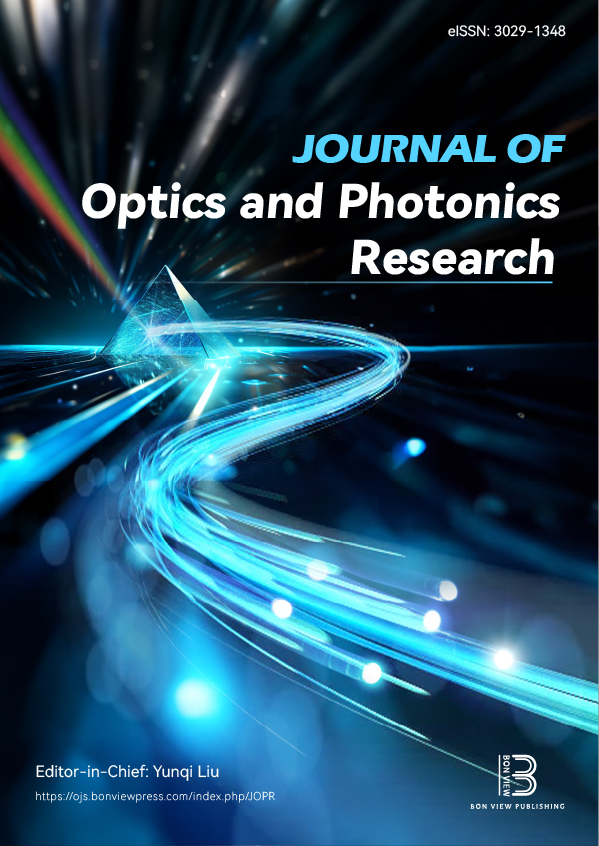Ultra-sensitive Photonic Crystal Fiber Based Refractive Index Sensor for Efficient Alcohol Detection at Near Infrared Region
DOI:
https://doi.org/10.47852/bonviewJOPR52024904Keywords:
modified circular photonic crystal fiber, alcohol detection sensor, relative sensitivity, confinement loss, light-matter interactionAbstract
This paper describes the development and evaluation of an ultra-sensitive modified circular photonic crystal fiber (MC-PCF) sensor for efficient alcohol detection. Operating at 850 nm, the sensor has exceptional relative sensitivity and low confinement losses, making it suitable for a wide range of practical applications. The MC-PCF sensor was developed using COMSOL Multiphysics and a finite element method to improve light-matter interaction by increasing sensitivity and precision. Performance metrics such as relative sensitivity, confinement loss, and nonlinear coefficients were assessed for various alcohols (methanol, ethanol, propanol, butanol, and pentanol). The sensor has impressive relative sensitivity values: 95.51% for methanol, 97.2% for ethanol, 97.85% for propanol, 98.69% for butanol, and 99.4% for pentanol. The confinement losses are 2.345 × 10−9, 1.022 × 10−9, 8.656 × 10−10, 1.821 × 10−9, and 3.097 × 10−9 dB/m, respectively. Methanol, ethanol, propanol, butanol, and pentanol have nonlinear coefficients of 78.95, 75, 73.69, 73.03, and 72.54 W−1km−1, respectively. The numerical apertures for the MC-PCF sensor at an 850 nm operating wavelength are 0.2599 for methanol, 0.2566 for ethanol, and 0.2567 for propanol, butanol, and pentanol. The optimized design of the MC-PCF sensor significantly improves light-matter interaction, resulting in high precision and rapid response when detecting changes in alcohol concentration. This makes the proposed sensor a strong and dependable solution for industrial quality control, medical diagnostics, and environmental monitoring. In summary, the MC-PCF sensor's outstanding sensitivity and low confinement loss at the near-infrared region demonstrate its potential for effective alcohol detection across various fields.
Received: 26 November 2024 | Revised: 24 February 2025 | Accepted: 21 May 2025
Conflicts of Interest
The authors declare that they have no conflicts of interest to this work.
Data Availability Statement
Data are available from the corresponding author upon reasonable request.
Author Contribution Statement
Amit Halder: Conceptualization, Methodology, Investigation, Writing – original draft, Writing – review & editing, Visualization. Md Riyad Tanshen: Software, Validation, Formal analysis, Resources, Data curation, Project administration. Md Mushfiqur Rahman Neidhe: Investigation, Data curation, Writing – review & editing, Visualization. Md Mohsin: Methodology, Formal analysis, Supervision.
Downloads
Published
Issue
Section
License
Copyright (c) 2025 Authors

This work is licensed under a Creative Commons Attribution 4.0 International License.


